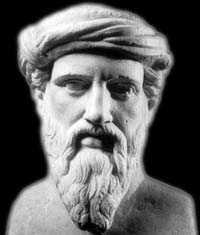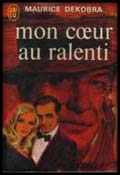By
When tango is admitted into the prescription books

he therapeutic effects of dancing date back to prehistorical times, when the sorcerer of Cro-Magnon invoked magic charms and performed ritual dances to scare away the evil spirits that were hidden in the body of a sick person.
 Thousands of years later, anthropologists and physiologists developed more than a theory about its origins. These theories attribute to rhythmical sound the starting of a neuromuscular reflex originated in the hypothalamus; or others that state that dancing reflects the rhythm of the biologic processes, heart beating and breathing.
Thousands of years later, anthropologists and physiologists developed more than a theory about its origins. These theories attribute to rhythmical sound the starting of a neuromuscular reflex originated in the hypothalamus; or others that state that dancing reflects the rhythm of the biologic processes, heart beating and breathing.
Whatever the physiological processes were, among most primitive societies, dancing helped to express the unity and strength of the tribe or to represent a powerful element in the rituals of magic, propitiation and invokation. Primitive dances celebrated important events, such as birth, puberty, courting, wedding, illness and death. Dances were either performed to cure sick people or to reach the communion with demoniac spirits or somebody’s ancestors.
Among the Greeks, Pythagoras —called the father of music therapy— was who inferred that the same music that calmed down the spirit of a lone little shepherd in a long distant island reached the most extreme limits of the heavenly spheres. Plato was who recommended that the health of body and mind has to be sought in music and gymnastics. But Aristotle was who attributed the beneficial effect of music to an «emotional catharsis», establishing the basis for the modern research about the effects that music produces on instincts and emotions.
Since the common denominator of all kind of life is movement —even when we rest our heart goes on beating and our lungs keep on working— dancing, far from being advised against, can work as an aid in the treatment of certain pathologies. The response to rhythmical sound through body movement is a basic characteristic found in every man. Music and dance, even though they are not per se medicine capable to cure, when combined with psycotherapy and other therapeutic methods can become valuable agents capable of supporting and accelerating the healing process.
By means of serious studies carried out in different parts of the world, it was determined that music stimulates all the functions connected with metabolism and with the glands of inner secretion, establishing with that a physiologic basis for the use of music and dance in the treatment of certain diseases.
Both, in general, may free the patient from mental or emotional tensions caused by preoccupations or disgusts, taking into account that, the highest value of dancing, in certain cases, lies in its unlimited potential as «re-socializing» agent.
In a recent study about the effects of dancing in persons of old age, carried out at the Mc Gill University of Montreal, Canada, Dr. Patricia McKinley states that dancing tango is as healthy as gymnastics. The achievements reached, besides reconfirming that it is an exercise that helps to fight the lack of physical exercise, improved the motor function and the coordination of movements, so providing a greater sureness in marching.
On page 12 of the newspaper La Razón of November 13, 1913, there is a reference to a curious report of the Academy of Medicine of France, which says: «According to the point of view of gymnastics education this dance (tango) has an advantage above all the other dances created in the last twenty years because it makes develop body and arms more strongly, forcing the flexions and the alternative extensions of the muscles of the lateral area of the torso, the extensions of the muscles of the front part of the chest with a strong projection of the shoulders to the back, the extensions of the lateral lumbar and abdominal groups...», etc. The commentary ended as follows: «Consequently, then, from now on for weak children French physicians will prescribe tangos at any hour to be alternated with sea bathing».
 These observations (and conclusions) are very far from the ones published in a Parisian journal by the French writer and paperman Maurice Dekobra (1885 - 1973), author of the book Mon coeur au ralenti. He fought tango dancing by saying that: «... it wrinkles our face and makes us grow older. The concern of taking a dance step makes people’s face be contracted; a wrinkle appears on the forehead between the eyes and “crow’s feet” are formed with each movement. The disgust, when one has not moved one’s foot according to the beat marks a wrinkle of bitterness on both sides of the mouth which won’t disappear so easily». The neck, according to Dekobra, cannot get rid of the “disasters” caused by tango: «... by twisting one’s head so frequently the collar of Venus becomes a horrible wrinkle». (La Razón, Buenos Aires, February 1914)
These observations (and conclusions) are very far from the ones published in a Parisian journal by the French writer and paperman Maurice Dekobra (1885 - 1973), author of the book Mon coeur au ralenti. He fought tango dancing by saying that: «... it wrinkles our face and makes us grow older. The concern of taking a dance step makes people’s face be contracted; a wrinkle appears on the forehead between the eyes and “crow’s feet” are formed with each movement. The disgust, when one has not moved one’s foot according to the beat marks a wrinkle of bitterness on both sides of the mouth which won’t disappear so easily». The neck, according to Dekobra, cannot get rid of the “disasters” caused by tango: «... by twisting one’s head so frequently the collar of Venus becomes a horrible wrinkle». (La Razón, Buenos Aires, February 1914)
Furthermore, tango dancing has demonstrated that it is a good ally for preventing certain cardiovascular diseases. The heart, that time before belonged to the exclusive field of people in love and poets, has become a major scientific concern in the field of medicine; the alpha and omega of life that begins to beat when the embryo is only three weeks old and it does not stop until its death.
 Our heart! The organ of the human body that has been dedicated more songs than the rest.
Our heart! The organ of the human body that has been dedicated more songs than the rest.
Our heart! Its links with our soul exist not only in the universal literature but also in the lyrics of many tangos. In the Shakespeare’s plays there are a large number of allusions to this organ; The word heart appears in the titles of 583 tangos (according to Omar Granelli’s information). And it will be enough by now to remember just three: “Corazoncito (Ñafa)”, “Corazón de papel” and “Corazón no le hagas caso”.
Tango-dancing, as therapy, which has demonstrated that it improves the quality of life and the tolerance to physical exercise, has entered the prescription books.
Those who still are not aware of it and keep on dancing passionately in neighborhood clubs and in dancehalls remind us of a Moliere’s character: they are undergoing therapy, and in some cases, rehabilitation, without knowing it.